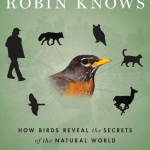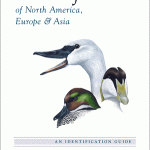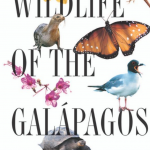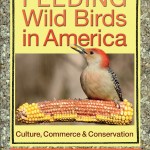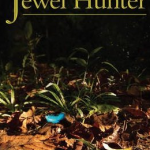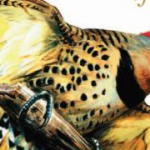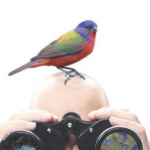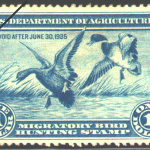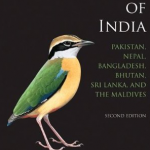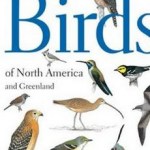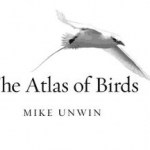bird watching
There was a dead rabbit in the middle of the road today. I suspected such a thing, nearby, just out of sight, and edible, because I noticed some crows taking off whenever a car went by. Then, when I went over, I could see the rabbit that they were feasting on between drive-bys.
I had been looking for rabbits lately, because of this: the cat had switched to hanging out by the upstairs window, the better to observe the just arriving Juncos (snow birds, it is fall). She had previously spent most of her time observing rabbits from the lower, ground level windows, until just the other day when…
The Birdman of Lauderdale is a collection of essays by birdman Clay Christensen.
Clay writes the popular "Birdman of Lauderdale" column for the Saint Paul Park Bugle, and leads birdwatching field trips in the Twin Cities area.
This is a collection of updated and edited essays from that publication, most about bird watching, or the birds themselves. Is it OK to hate cowbirds? What is it like to witness the takeoff of a mob of cranes? How do birdwatchers find birds anyway? What is bird banding all about? These and other burning questions are addressed in engagingly written snippets.
I…
There are three kinds of books that count as animal (usually bird) guides.
1) A pocket field guide of the critters of a reasonably circumscribed geographical area, like the Peterson Field Guide to Birds of Eastern and Central North America. This is a small book that can fit in a big pocket, and a classic guide like this one is something you'll want to have with you while bird watching in the eastern or central US.
2) A big book, not suitable for pockets, of the critters of a reasonably circumscribed geographical area. A great example of this is The Crossley ID Guide: Eastern Birds . It…
Wildlife of the Galápagos: Second Edition (Princeton Pocket Guides), by Julian Fitter, Daniel Fitter, and David Hosking is both a field guide and a travel guide, focusing on the Galapagos Islands. It includes basic information about each island and each town or tourist destination, and a comprehensive guide to how to visit, what to bring and not bring, and otherwise plan your trip to these amazing evolution-drenched islands.
The wildlife that is covered includes birds, other land vertebrates including the famous tortoises and lizards, offshore mammals, fish, insects, and plants. There is…
When the Texas A&M University Press asked me to consider reviewing Feeding Wild Birds in America: Culture, Commerce, and Conservation by Paul Baicich, Margaret Barker, and Carrol Henderson, I had mixed feelings.
Was this just another backyard bird feeding guide? That would be nice, but not too exciting. After all, feeding birds is just a matter of getting a bird feeder and keeping it full, right? Was it an indictment of what some might consider a bad practice, because it brings birds in close contact with killer windows and cats, and causes them to become dependent on fickle human…
The Jewel Hunter by Chris Goodie is the story, generally chronological, of one man's quest to observe, in nature, every known species of a rare and typically elusive bird: the Pittas. Oh, and all in one year. For a birder, this is the rough equivalent of buying some impossible to pay for sports car as a symptom of midlife crisis. It required being bitten by leeches and scared by snakes.
The Pittidae is a family of songbirds distributed in the Old World, mainly in Asia and Australia, but with a few species in Africa.
They tend to live in rain forests or at least, denser woodlands and…
This is a summary of several of the better books I’ve had the opportunity to review here, organized in general categories. This is written from a North American perspective since most of my readers are North American (though many of you live to the west of the “Eastern Region” … but you probably know that). So, when not specified, a book with a regional focus is likely to be for that area, and the “Outside the US” section is labeled thusly.
Everybody needs a basic field guide. If you need more than one field guide because you are a family of birders, or because you like to keep one in the…
Are you interested in birding but don't really know much about it? Did you just put a feeder outside and noticed that birds are interesting, or did you finally get around to stopping at that wildlife refuge you drive by every week on the way to the casino and realize that walking down to the swamp to look at birds and stuff is both better exercise and cheaper than playing slot machines for nine hours straight? Or have you been birding in a casual way for a while, using your Uncle Ned's old binoculars and a tattered and torn Peterson you found on the sale table at the library, and want to…
There are several things you need to do to be a better birder. Some of these things can be handled by just tossing money after the problem. Better binoculars, more books, that sort of thing. If you use those tools well they will improve your abilities as a birder. But the most important thing you can do is probably to
consciously want to improve yourself and to go and learn stuff pertaining to that. And, to do that, knowledge is important bus so is approach, perhaps methodology is a good word.
There really are three or four aspects to being a better birder that could be viewed very…
The Bird Bloggers, led by Corey Finger at 10,000 birds, where I blog monthly, are asking you to sign this petition and pass it on to others:
We propose a Wildlife Conservation Stamp, comparable to the well-known Duck Stamp, to support the acquisition of habitat and the conservation of all wildlife in the National Wildlife Refuge system with an emphasis on non-game species. A Wildlife Conservation Stamp would allow birders, photographers, hikers, and other people who enjoy wildlife in a non-consumptive way to financially show their support of the National Wildlife Refuge system.
CLICK HERE TO…
Let's look at Birds of India: Pakistan, Nepal, Bangladesh, Bhutan, Sri Lanka, and the Maldives (Second Edition) (Princeton Field Guides):
The best field guide to the birds of the Indian subcontinent is now even better. Thoroughly revised, with 73 new plates and many others updated or repainted, the second edition of Birds of India now features all maps and text opposite the plates for quicker and easier reference. Newly identified species have been added, the text has been extensively revised, and all the maps are new. Comprehensive and definitive, this is the indispensable guide for anyone…
Face it. Half the time ... most of the time, really ... you use your Peterson (or some other favorite "field guide") as a checklist. You see a bird and you pretty much know in your head what it is, but you need to look it up to see what the three or four similar ducks or woodpeckers or whatever are in your area in order to be sure that it is a Common Merganser or a Red Headed Woodpecker or whatever. All you need is a basic picture (drawing preferred for this sort of thing) the names of the birds and basic range maps.
That is the role played by the Princeton Illustrated Checklists; These…
How are birds related to dinosaurs, crocodiles, and pterosaurs? Where do birds live, and not live? How many bird species are there, and how many actual birds, and how does this vary across the glob? What about endemics?; Where ate the most local species found? Mike Unwin's The Atlas of Birds: Diversity, Behavior, and Conservation covers this and more in a richly illustrated detailed global survey of Aves.
This new and very impressive, and highly accessible volume covers bird biogeography with an overview of counts and diversity followed by a continent-by-continent review, to give you an idea…
tags: Magnificent Frigatebird, Man O'War, Fregata magnificens, birds, mystery bird, bird ID quiz
[Mystery bird] Magnificent Frigatebird, sometimes known as the Man O'War, Fregata magnificens, photographed at Quintana Neotropical Bird Sanctuary, Brazoria County, Texas. [I will identify this bird for you in 48 hours]
Image: Joseph Kennedy, 15 July 2010 [larger view].
Nikon D200, Kowa 883 telescope with TSN-PZ camera eyepiece 1/1000s f/8.0 at 1000.0mm iso400.
Please name at least one field mark that supports your identification.
This bird is built for speed and agility in the air and is…
tags: Reddish Egret, Egretta rufescens, birds, mystery bird, bird ID quiz
[Mystery bird] Reddish Egret, Egretta rufescens, photographed at Quintana Neotropical Bird Sanctuary, Brazoria County, Texas. [I will identify this bird for you in 48 hours]
Image: Joseph Kennedy, 15 July 2010 [larger view].
Nikon D200, Kowa 883 telescope with TSN-PZ camera eyepiece 1/1250s f/8.0 at 1000.0mm iso400.
Please name at least one field mark that supports your identification.
This lovely species was nearly exterminated in the US by hunters who killed the birds for their plumes. The population is small…
tags: Black Kite, Milvus migrans, birds, mystery bird, bird ID quiz
[Mystery bird] Black Kite, Milvus migrans, photographed at Ngorongoro Crater, Tanzania, Africa. [I will identify this bird for you in 48 hours]
Image: Dan Logen, 23 January 2010 [larger view].
Nikon D2X, with 600 mm lens with 1.4 extender, ISO 320, 1/350 sec f/5.6.
Please name at least one field mark that supports your identification.
You've seen this African species before, but may not remember, but there are plenty of family members in North America that you are familiar with, so if you cannot identify this…
tags: Gray Wren-warbler, Zambia Wren-warbler, Western Wren-warbler, Calamonastes simplex, Lesser Striped Swallow, Striped Swallow, Hirundo abyssinica, birds, mystery bird, bird ID quiz
[Mystery bird]Gray Wren-warbler (perched), also known as a Zambia Wren-warbler or Western Wren-warbler, Calamonastes simplex, and a Lesser Striped Swallow (flying), also known as a Striped Swallow, Hirundo abyssinica, photographed near the Pangani River Camp, Tanzania, Africa. [I will identify this bird for you in 48 hours]
Image: Dan Logen, 14 January 2010 [larger view].
Nikon D300s, 600 mm VR lens. ISO…
tags: White Tern, Gygis alba, birds, mystery bird, bird ID quiz
[Mystery bird] The White Tern is known by more alternate names than a con-artist, also being known as the Angel Tern, Common White-tern, Common White Tern, Little White Tern, Little Fairy Tern, Fairy Tern, Little White-tern, Little Fairy-tern, and even (since it lives in tropical oceans of the world) as the Atlantic White Tern, Gygis alba (formerly; Gygis microrhyncha), photographed on Midway Atoll National Wildlife Refuge -- one of the most remote coral atolls on earth -- a US territory in the north Pacific Ocean [I will…
tags: Bicolored Blackbird, Agelaius phoeniceus gubernator, birds, mystery bird, bird ID quiz
[Mystery bird] Fledgling Bicolored Blackbird, Agelaius phoeniceus gubernator, photographed at Las Gallinas Wildlife Ponds, Marin County, California. [I will identify this bird for you in 48 hours]
Image: Joseph Kennedy, 13 May 2010 [larger view].
Nikon D200, Kowa 883 telescope with TSN-PZ camera eyepiece 1/500s f/8.0 at 1000.0mm iso400.
Please name at least one field mark that supports your identification.
This mystery bird is quite challenging to identify, but for those of you who can ID this…
